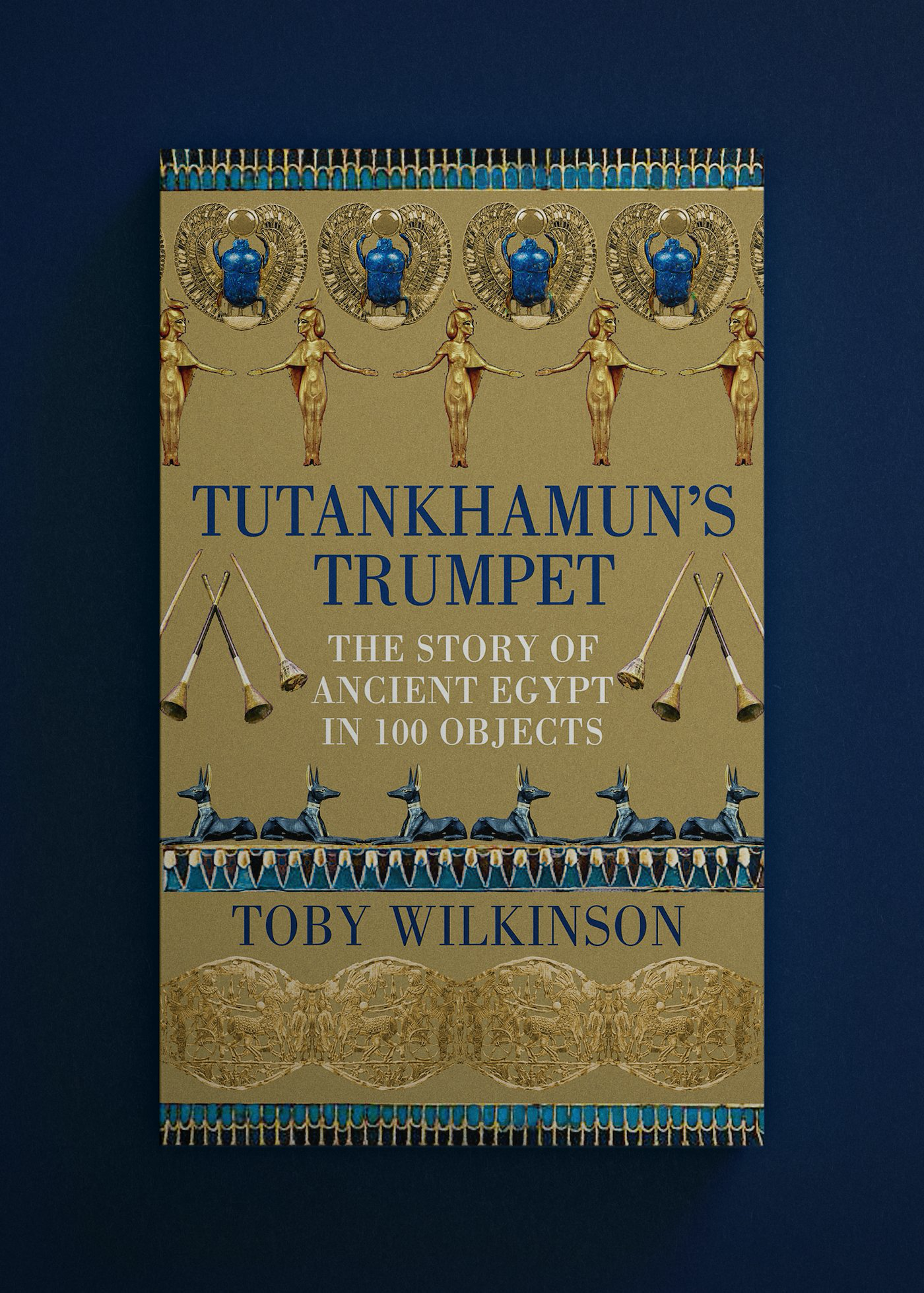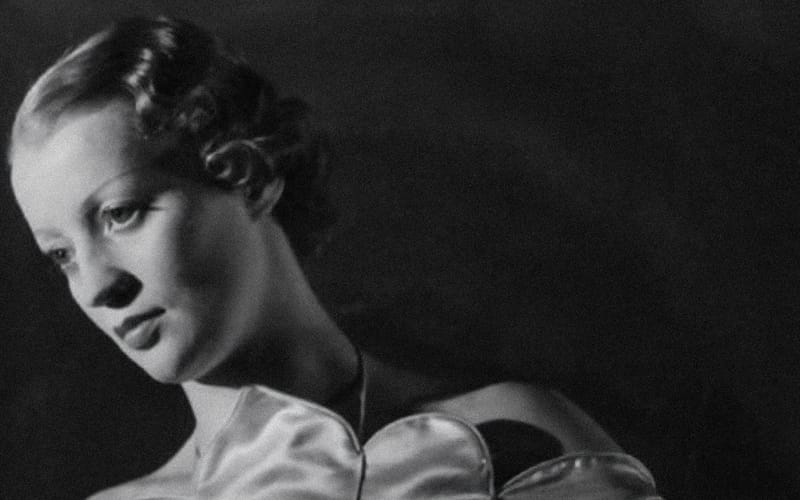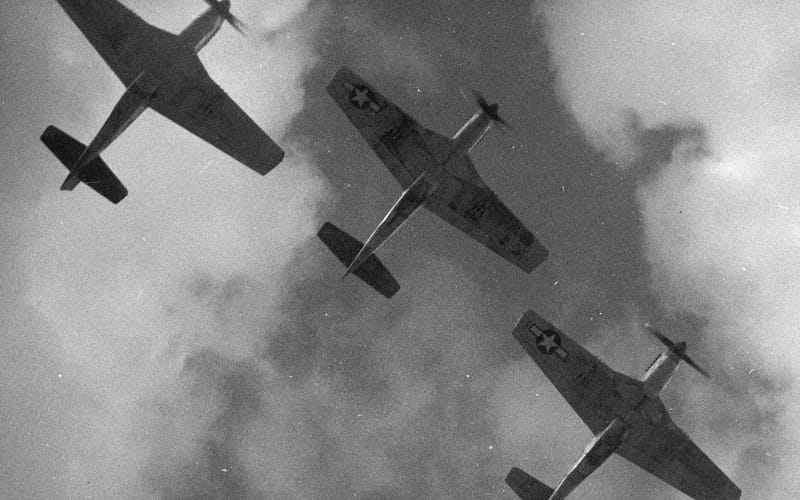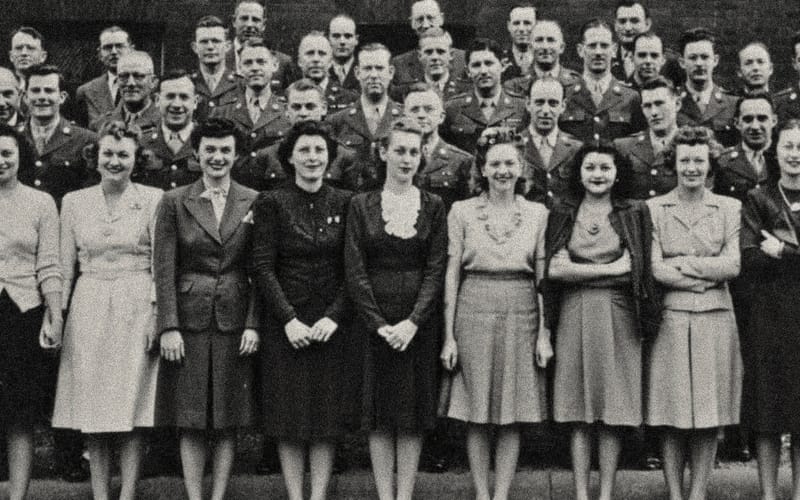Excerpt: Tutankhamun's Trumpet by Toby Wilkinson
The Story of Ancient Egypt in 100 Objects
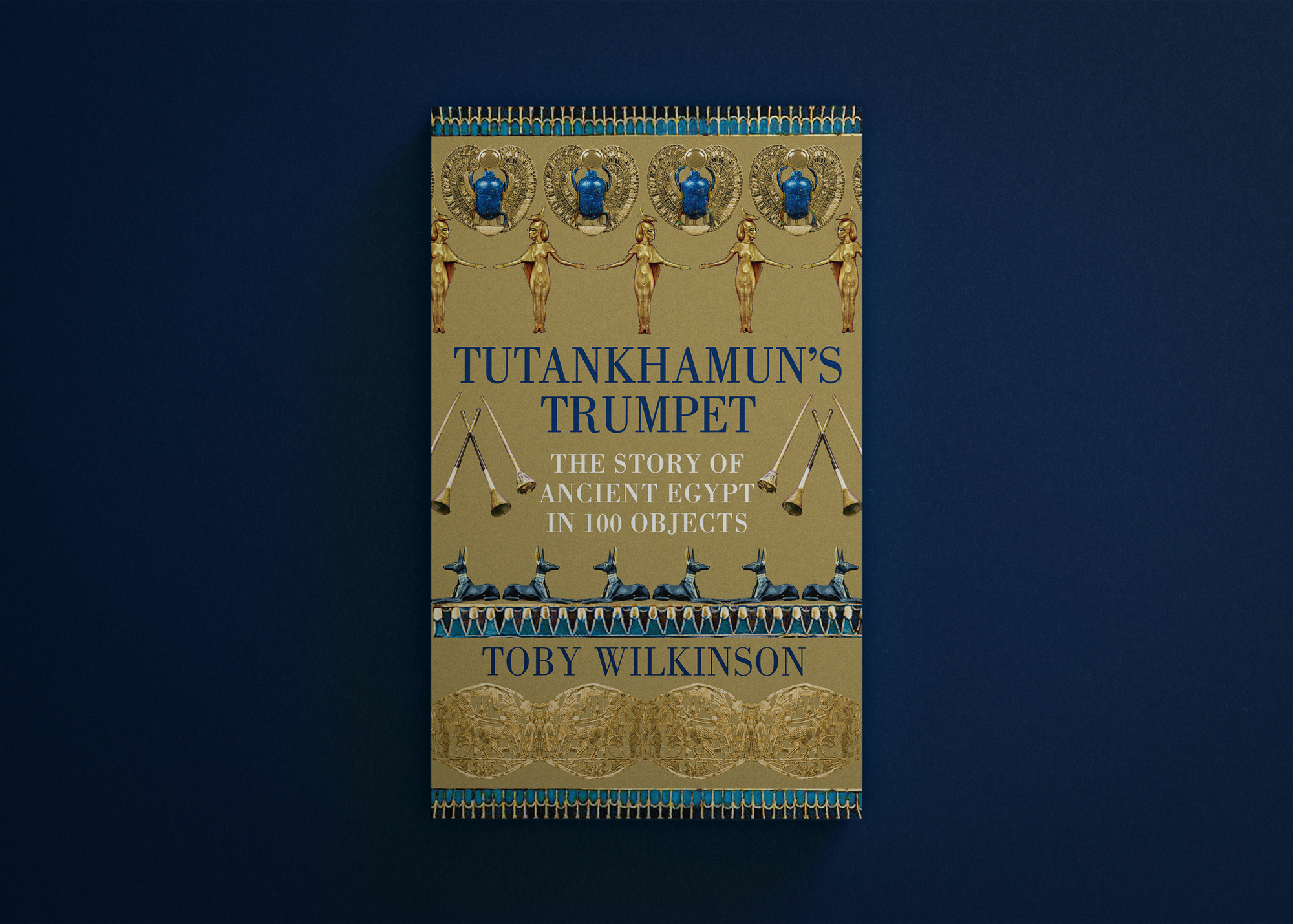
Acclaimed Egyptologist Toby Wilkinson takes the objects buried with the boy king Tutankhamun as the source material for a wide-ranging, detailed portrait of ancient Egypt – its geography, history, culture and legacy.
One hundred artefacts from the tomb, arranged in ten thematic groups, are allowed to speak again – not only for themselves, but as witnesses of the civilization that created them. Never before have the treasures of Tutankhamun been analysed and presented for what they can tell us about ancient Egyptian culture, its development, its remarkable flourishing, and its lasting impact.
With an exclusive foreword for Unseen Histories by Toby Wilkinson

In the long, 3,000-year sweep of ancient Egyptian history, Tutankhamun was one of the least significant rulers. He came to the throne as a boy and reigned for less than a decade. Yet, thanks to the discovery of his tomb 100 years ago, he has become the most famous pharaoh of them all.
His grave goods, numbering over 5,000 objects in total, were hurriedly assembled and crammed into a makeshift tomb. Nevertheless, they represent the largest single collection of funerary artefacts from ancient Egypt, perhaps from the entire ancient world. They bring together centuries of accumulated custom and tradition, offering us insights into the ancient Egyptians’ long history, complex beliefs and sophisticated culture.
Tutankhamun’s treasures also present a snapshot of pharaonic civilisation at its apogee: for the era of the boy-king, the late eighteenth dynasty, was a golden age when Egyptian power and influence extended far beyond the Nile Valley. The pharaoh’s writ extended over an empire that stretched from the banks of the Euphrates in Mesopotamia to the Fourth Nile Cataract in Upper Nubia. Tutankhamun’s Egypt absorbed influences from its imperial possessions, adding further colour and exoticism to an already heady mix of cultural tradition and innovation.
The objects from Tutankhamun’s tomb, as well as casting light on the entire phenomenon of ancient Egypt, showcase a country at its moment of supremacy.
— Toby Wilkinson
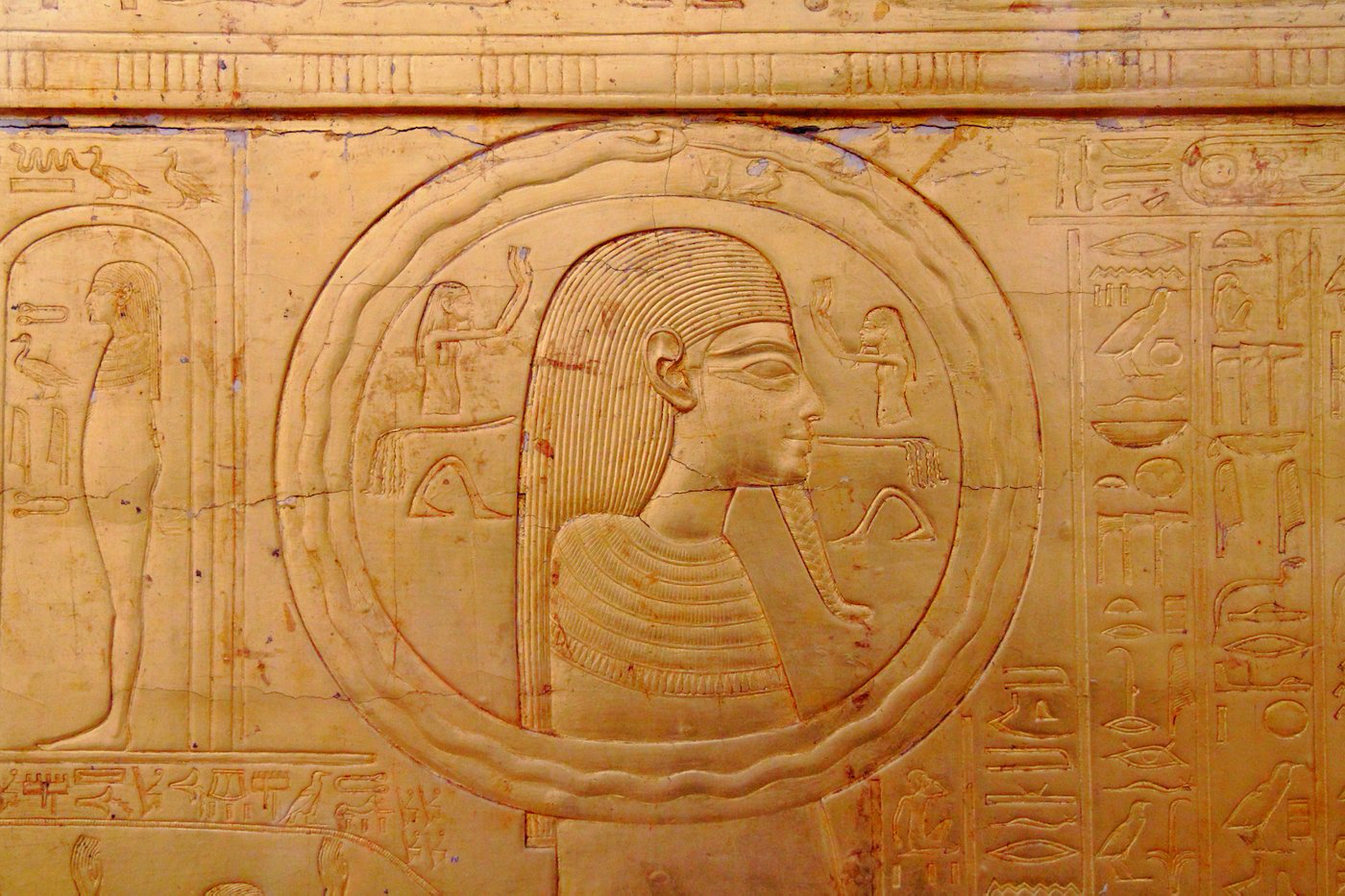

Supremacy
An abridged excerpt from Tutankhamun's Trumpet by Toby Wilkinson
The magnificence of Tutankhamun’s treasures reflects a civilization at the height of its power and influence. When the founders of eighteenth-dynasty Egypt finally succeeded in driving out foreign invaders and reuniting the Nile Valley under Egyptian rule, they understood the importance of thinking creatively and acting decisively to maintain the country’s security and prosperity. The solution they adopted was the deliberate widening of Egypt’s borders, creating buffer zones of influence in Nubia and the Levant: an Egyptian empire. At its greatest extent, the pharaoh’s writ extended from the banks of the Euphrates in Mesopotamia to the rapids of the Fourth Cataract in Upper Nubia, a distance of some 1,200 miles. Different administrative solutions were adopted in different regions, whether the direct annexation and colonisation of Nubia or a looser system of vassal states in the Near East. But what all parts of the empire had in common was subjugation to pharaonic rule by force of arms. At the same time, new ideas, materials, technologies and fashions found their way back to the Nile Valley, making eighteenth-dynasty Egypt truly cosmopolitan. While the pharaoh was portrayed as a fearless leader and the unassailable conqueror of foreign lands, Egyptian taste was, more than ever before, shaped by foreign fashions. This paradox at the heart of eighteenth-dynasty court culture is strikingly attested in the objects from Tutankhamun’s tom.

If a single piece of technology enabled and sustained Egyptian supremacy during the New Kingdom, it was the horse-drawn chariot. Developed by Indo-Aryan peoples in Central Asia, this new contraption revolutionized the art of warfare. The Egyptians encountered it during their battles against the Hyksos; their subsequent adoption of it allowed them to dominate swathes of the Near East for centuries. The chariot provided a fast-moving mobile platform for armed attack, bringing the element of surprise to the battlefield. A squadron of chariots gave an army the ability to launch a sudden attack from multiple directions and turn a defeat into a rout. The Egyptians mastered them with deadly efficiency, turning a foreign invention into an instrument of pharaonic power.
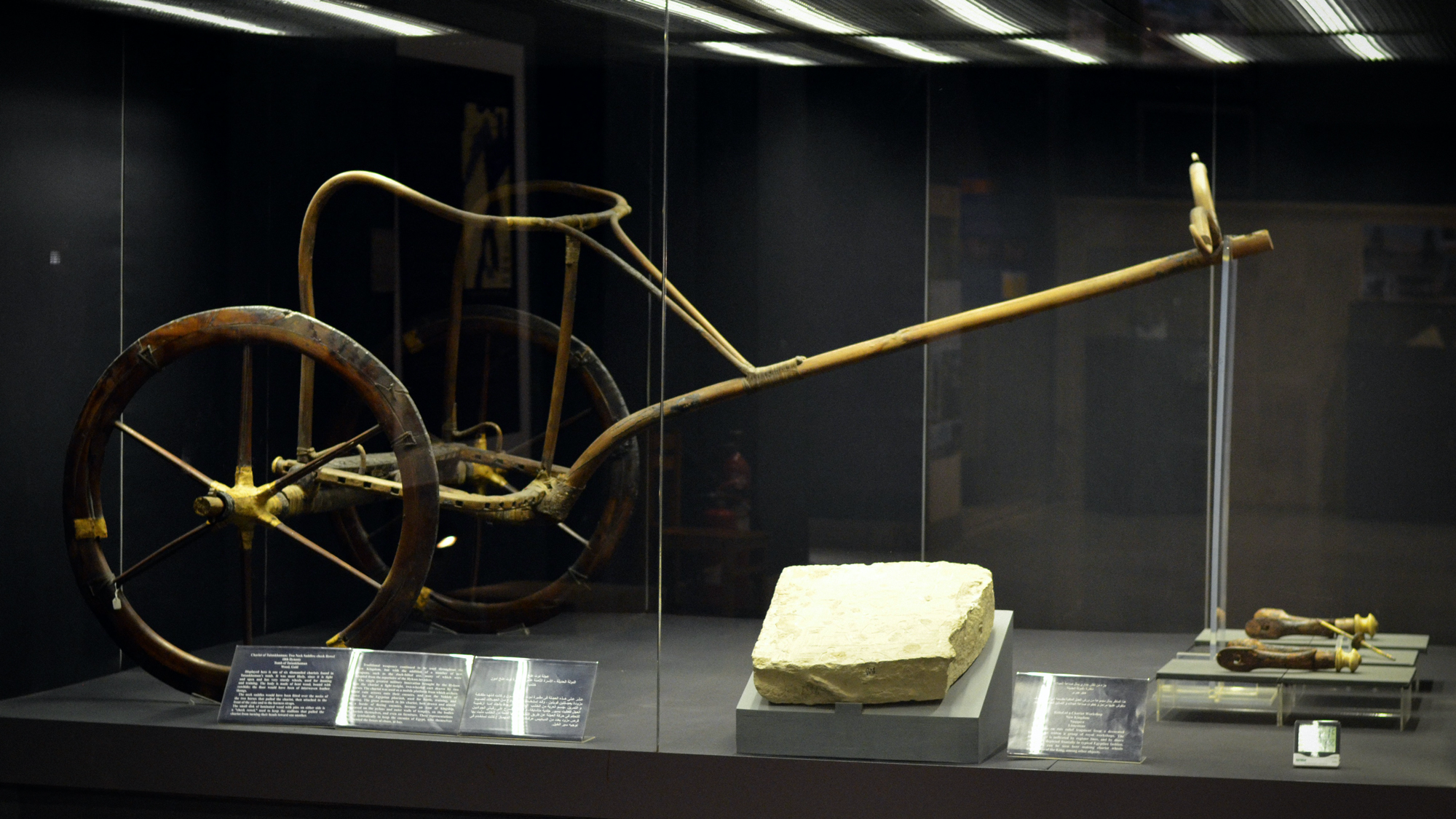
The earliest reference to chariots in an Egyptian text occurs in Kamose’s account of the booty seized from the Hyksos, where they are described as ‘that which belongs to a span [of horses]’. In the reign of Ahmose, chariots appear for the first time in Egyptian art, in battle scenes from a temple at Abydos. These early examples seem to have been rather simple vehicles, with primitive four or eight-spoked wheels, limited manoeuvrability and little protection. Within a generation or two, however, significant advances had been made in chariot design and manufacture, assisted no doubt by the Egyptians’ familiarity with more advanced examples from the Levant. In the battle reliefs of Thutmose III, the great warrior king of the eighteenth dynasty, chariots can be seen everywhere: carrying the king onto the field and paraded among the captured booty. The image of the pharaoh in his chariot became the quintessential icon of royal power and is ubiquitous in the art of the New Kingdom. Yet until the discovery of Tutankhamun’s tomb, only two complete chariots had been discovered, one of which was from the burial of his great-grandparents, Yuya and Tjuyu. The boy king’s treasure included no fewer than six chariots. Four were found in the Antechamber and two in the Treasury. All had been dismantled for ease of storage, and reassembling them was a long and complex task. Today, five of the six have been put back together for public display, and together they constitute one of the most impressive groups of artefacts from the tomb. The basic design consisted of a cab with a D-shaped floor plan, connected via a long pole with a yoke for two horses. The cab’s floor was made from leather mesh to absorb shocks. Two wheels were rear-mounted for maximum manoeuvrability, with six-spoked wheels becoming the norm in the middle of the eighteenth dynasty; they could be fitted with outer tyres of leather or wood to protect the rim.
Just as the horse-drawn carriages of Victorian England came in various shapes and sizes, so the construction and appearance of Tutankhamun’s chariots differed depending on the role they played. One of the six was a plain and ultra-lightweight example, with undecorated open sides. It would probably have been used for everyday riding or hunting. Among the few buildings with which Tutankhamun can be definitively linked, one of the most intriguing is the ‘rest house’ next to the Great Sphinx on the Giza Plateau. Here, it seems the young king and his eighteenth-dynasty forebears enjoyed practising their horse-riding and chariotry skills.
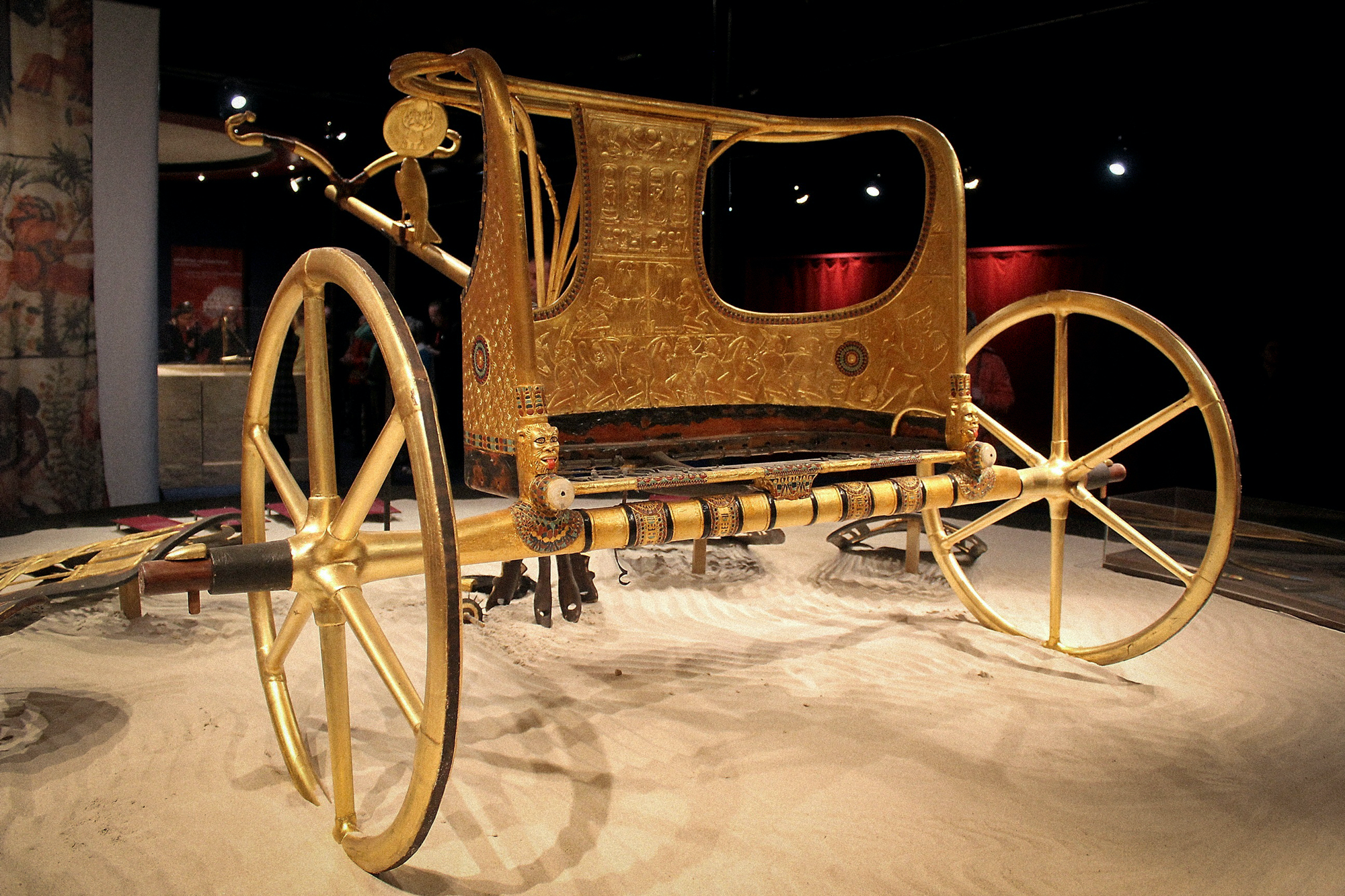
By contrast with Tutankhamun’s lightweight ‘runabout’, his two finest chariots must surely have been intended for ceremonial purposes; with a nod to British imperial pageantry, Carter identified them as the king’s ‘state chariots’. The pharaohs of the eighteenth dynasty certainly used chariots in formal processions and on state occasions, and they would have been a central feature of Tutankhamun’s ceremonial life. When Akhenaten made the official proclamation of his new capital city, Amarna, it was from the back of a glittering chariot, calling to mind the image of the sun god’s appearance at dawn:
His Majesty... appeared mounted upon the great chariot of electrum, like the Orb when he rises on the horizon and fills the Two Lands with his love.
Once the city of Amarna had begun to function as the country’s capital, Akhenaten instituted a daily chariot ride as the central element in the city’s ceremonial life – perhaps to replace the regular festivals of the gods that he had abolished as part of his religious revolution. Every morning, he would travel by chariot with members of the royal family and various out-riders from the royal residence at the northern end of the city, along the Royal Road to the King’s House in the Central City. Depictions of this spectacle are found in the tombs of Akhenaten’s loyal courtiers. Tutankhamun’s first ‘state chariot’ is a real-life example of the kind of vehicle his father must have used on such occasions. Its cab is over a metre wide and has a thin wooden floor. The frame has a waist-height rail to help the passenger maintain his balance, while the body is decorated with scenes of royal power, and reliefs showing the celestial falcon protecting the names of the king and his wife. The main surfaces are covered in gesso and gold leaf, and inlaid with semi-precious stones and coloured glass. The wheels have tyres made of raw hide, while the axle, the yoke and the pole are all decorated with gold. It must have been a dazzling spectacle: the king in his regalia, mounted on his finest chariot, and the horses wearing gilded crests topped with ostrich feathers.
Alongside the chariots themselves, Tutankhamun’s tomb yielded a large number of related fixtures and fittings: saddles, harnesses, blinkers, bridle bosses, fly whisks, ‘check rowels’ (to distract capricious stallions) and whip stocks; only the metal bits were missing, removed, perhaps, by early tomb robbers. Such a large array of chariot equipment illustrates how, within a couple of centuries, an entirely foreign invention had come to dominate the practice of Egyptian kingship.
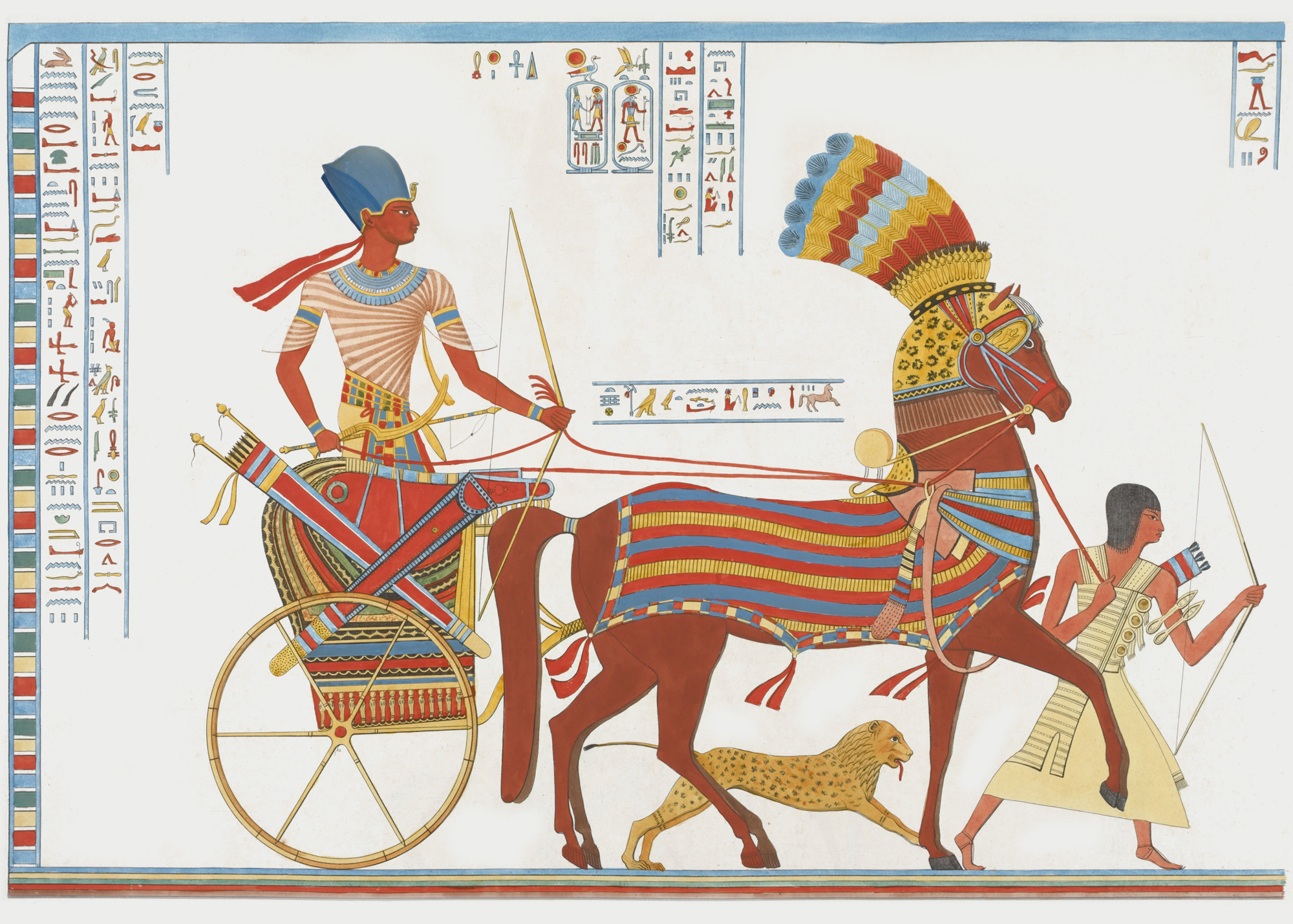

The iconic image of the pharaoh in his war chariot shows him steering the vehicle with the reins wrapped around his waist, leaving him free to wield a bow and fire arrows at his enemies. While chariotry represented the most modern form of military technology in the New Kingdom, there was still an important place for its most ancient, archery.
The bow and arrow seem to have been developed very early in human evolution. Certainly, the earliest Egyptian figurative art – painted on pottery or etched into the rocks of the Eastern and Western Deserts – includes images of hunters and fighters armed with archery equipment. Like so many other accoutrements of military prowess, the bow and arrow became part of the iconography of kingship during the period of conflict that led up to the unification of Egypt. In the twelfth dynasty, a cycle of hymns to the king Senusret III lauded him as a ruler ‘Who shoots the arrow like Sekhmet [a fierce lioness goddess] | When he overthrows thousands who ignore his power’. The eighteenth-dynasty pharaoh Amenhotep II seems to have been something of an archery fanatic. One relief shows him firing arrows through a copper target while riding in a chariot; supremely confident of his own strength and ability, he challenged his followers to beat him, declaring, ‘Anyone who pierces this target as deep as His Majesty’s arrow shall have these things [as a prize]’.
The bow was thus a royal weapon and, because of its unrivalled antiquity, symbolic of warfare as a whole. Perhaps not surprisingly, Tutankhamun was laid to rest with a plethora of archery equipment. It excited great interest at the time of the tomb’s excavation, with a journalist for the Daily Telegraph commenting:
In design they are not unlike the conventional bow and arrow of modern times, but they display a remarkable ingenuity and thoroughness in construction. It was apparent that they had been placed in the tomb with Tutankhamen to assist his ancient Majesty in combating any enemies who might attempt to retard his progress from this world to the next.
Altogether, the tomb yielded at least forty-six bows and 428 arrows, as well as four bracers (to protect the inside of the arm from the bowstring), two quivers and two bow cases. The last were made of wood; one, 1.67 metres long, was painted white and contained seven bows and 254 arrows; the second was covered with linen, decorated in marquetry with bark, faience and gold leaf, and contained three bows. The fact that these were stored in such carefully crafted boxes points to their prized status; they were not ordinary bows, but the very latest composite models.
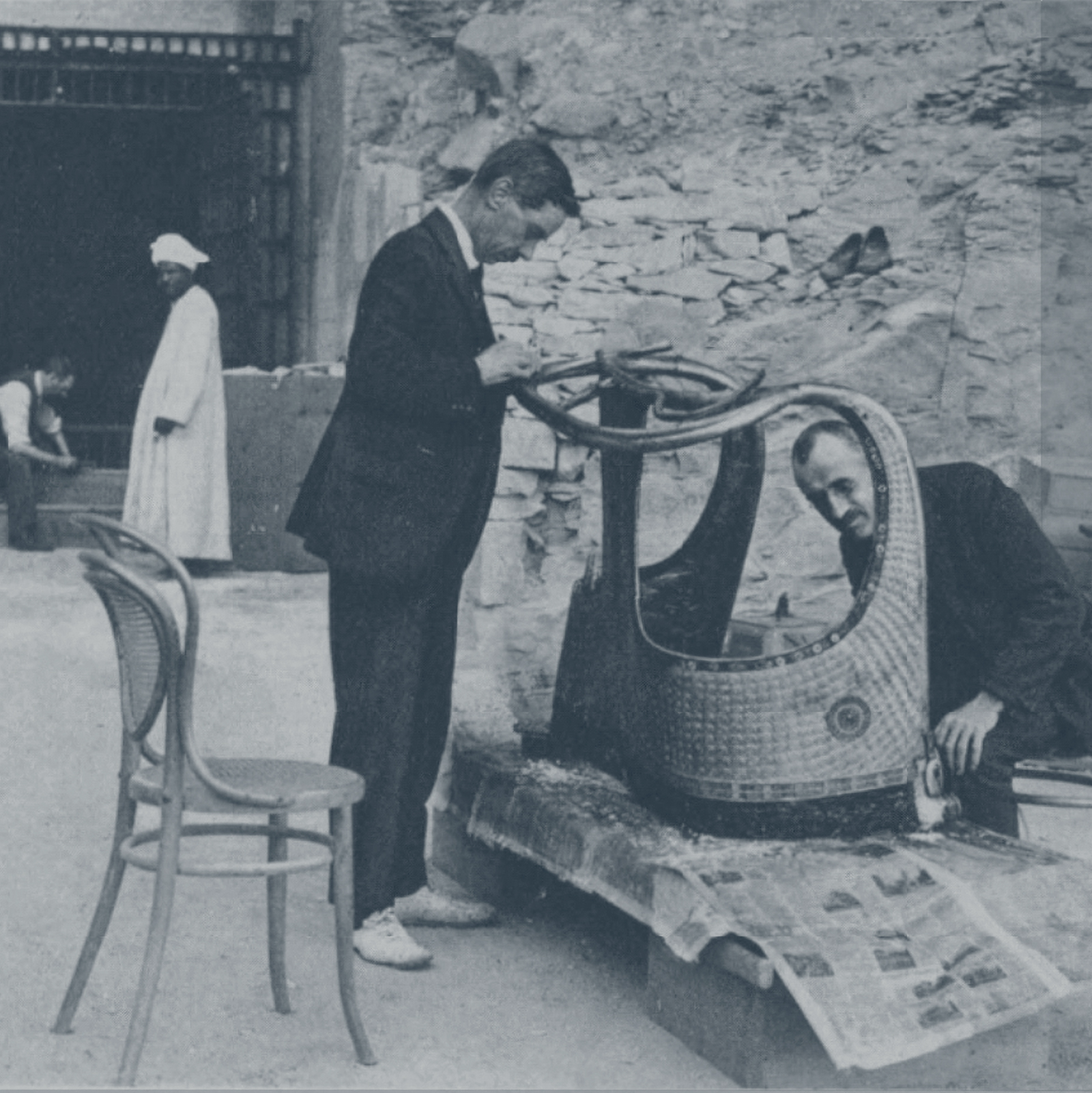
Introduced from the Near East during the battles against the Hyksos, the composite bow – like the chariot – represented a huge advance in military technology. Instead of being made from a single piece of wood, different types of wood were glued together, often with elements of sinew, horn and bark. It was much more time-consuming to produce, but it had far greater strength and penetrating power. Most of Tutankhamun’s composite bows have a core of ash, wrapped with birch or cherry bark. The finest example, found laid on a bed in the Antechamber, is covered with gold leaf and granulated gold decoration. Carter labelled it the king’s ‘bow of honour’, and described it as ‘a work of almost inconceivable fineness’. Another of the king’s composite bows has tips carved and painted to resemble enemy captives, their necks forming the indentations where the bowstring was tied –the king symbolically strangled his enemies every time he drew his bow. The symbolic association of bows and enemies in ancient Egypt went further. From an early period, the term ‘bowmen’ was used to refer to hostile forces. Nubia was known, in ancient Egyptian, as Ta-Sety or ‘bow-land’, for the inhabitants of the Upper Nile enjoyed a longstanding reputation as expert archers. Their skills were appreciated by the ancient Egyptians, who recruited Nubian auxiliaries to serve in Egyptian expeditions in the Old Kingdom and during the civil war of the First Intermediate Period. A wooden model depicting a troop of Nubian archers was among the grave goods interred with an Egyptian noble of this period, while a community of Nubian bowmen settled at Gebelein near Thebes: on their gravestones, they are shown with tightly curled hair, dark skin and a distinctive form of sash attached to their kilts. They are also shown carrying bows and arrows, emphasizing their particular skill and the reason they were welcomed by the Egyptians.
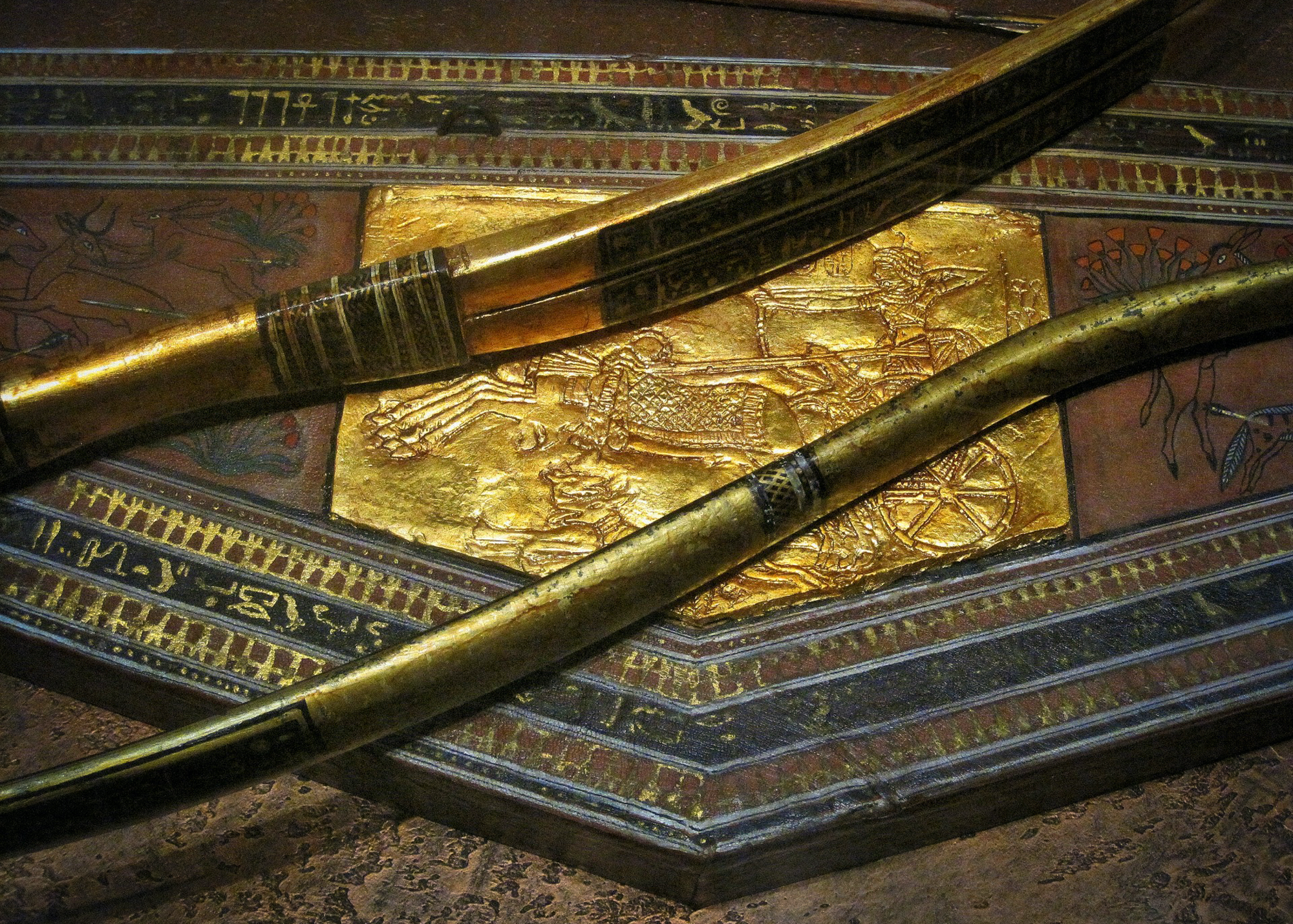
However, by the eighteenth dynasty, when the Upper Nile was firmly back under Egyptian control, the Nubians’ greatest attribute was used against them as a term of condescension. An inscription from the beginning of the dynasty states:
Now after His Majesty had slain the Bedouin of Asia, he sailed upstream to Upper Nubia to destroy the Nubian bowmen.
In Tutankhamun’s Egypt, ‘bowmen’ were still occasionally welcomed into Egyptian society, but only if they pledged full allegiance to the sovereign. One example was a local Nubian prince from a region called Miam, which became the colonial seat of the Egyptian viceroys of Kush in the New Kingdom. The prince chose to adopt a loyalist Egyptian name, Hekanefer (‘the good ruler’, in reference to the pharaoh), and built his tomb according to the latest Egyptian design. He even befriended the viceroy himself, and was shown in his tomb at Thebes, along with a group of fellow Nubians. While retaining their dark skin, the ‘bowmen’ are shown wearing Egyptian-style robes, signifying their adoption of Egyptian cultural norms, and hence the triumph of pharaonic civilization. As one Egyptologist has remarked of Hekanefer, ‘To Egyptians he remained a Nubian, but to his local community he presented himself as if he were an Egyptian.’
The bows from the tomb of Hekanefer’s royal master, Tutankhamun, were thus weapons perfected in the Near East and adopted by the Egyptians, but symbolic of the Nubians; instruments of royal prestige, but also of a subject people. They are illustrative of the multiple layers of meaning embodied in artefacts, and of the cultural complexity of eighteenth-dynasty Egypt ■
His books include the critically acclaimed ⇲ Early Dynastic Egypt, Genesis of the Pharaohs, ⇲ The Thames & Hudson Dictionary of Ancient Egypt, ⇲ Lives of the Ancient Egyptians, ⇲ The Rise and Fall of Ancient Egypt, ⇲ The Nile, ⇲ Writings from Ancient Egypt, ⇲ Aristocrats and Archaeologists, and ⇲ A World Beneath the Sands.

Tutankhamun's Trumpet: The Story of Ancient Egypt in 100 Objects
Pan Macmillan, 12 May 2022
RRP: £25.00 | 496 pages | ISBN: 978-1529045871
On 26 November 1922 Howard Carter first peered into the newly opened tomb of an ancient Egyptian boy-king. When asked if he could see anything, he replied: ‘Yes, yes, wonderful things.’
In Tutankhamun’s Trumpet, acclaimed Egyptologist Toby Wilkinson takes a unique approach to that tomb and its contents. Instead of concentrating on the oft-told story of the discovery, or speculating on the brief life and politically fractious reign of the boy king, Wilkinson takes the objects buried with him as the source material for a wide-ranging, detailed portrait of ancient Egypt – its geography, history, culture and legacy.
One hundred artefacts from the tomb, arranged in ten thematic groups, are allowed to speak again – not only for themselves, but as witnesses of the civilization that created them. Never before have the treasures of Tutankhamun been analysed and presented for what they can tell us about ancient Egyptian culture, its development, its remarkable flourishing, and its lasting impact.
Filled with surprising insights, unusual details, vivid descriptions and, above all, remarkable objects, Tutankhamun’s Trumpet will appeal to all lovers of history, archaeology, art and culture, as well as all those fascinated by the Egypt of the pharaohs.
"Beautifully written, sumptuously illustrated, constantly fascinating" — The Times
"I’ve read many books on ancient Egypt, but I’ve never felt closer to its people" — The Sunday Times

Toby recommends:
⇲ Tutankhamun: Excavating the Archive by The Griffith Institute and Richard Bruce Parkinson (Bodleian Library, 2022)
⇲ The City of Akhenaten and Nefertiti: Amarna and its People by Barry Kemp (Thames & Hudson, 2012)
⇲ Tutankhamun’s Armies: Battle and Conquest During Ancient Egypt’s Late Eighteenth Dynasty by John Coleman Darnell and Colleen Manassa (John Wiley & Sons, 2007)
Tutankhamen’s Curse: The Developing History of an Egyptian King by Joyce Tyldesley (Profile Books, 2013)
Illustrative material for this excerpt is not necessarily included in the book.
Also Featured On
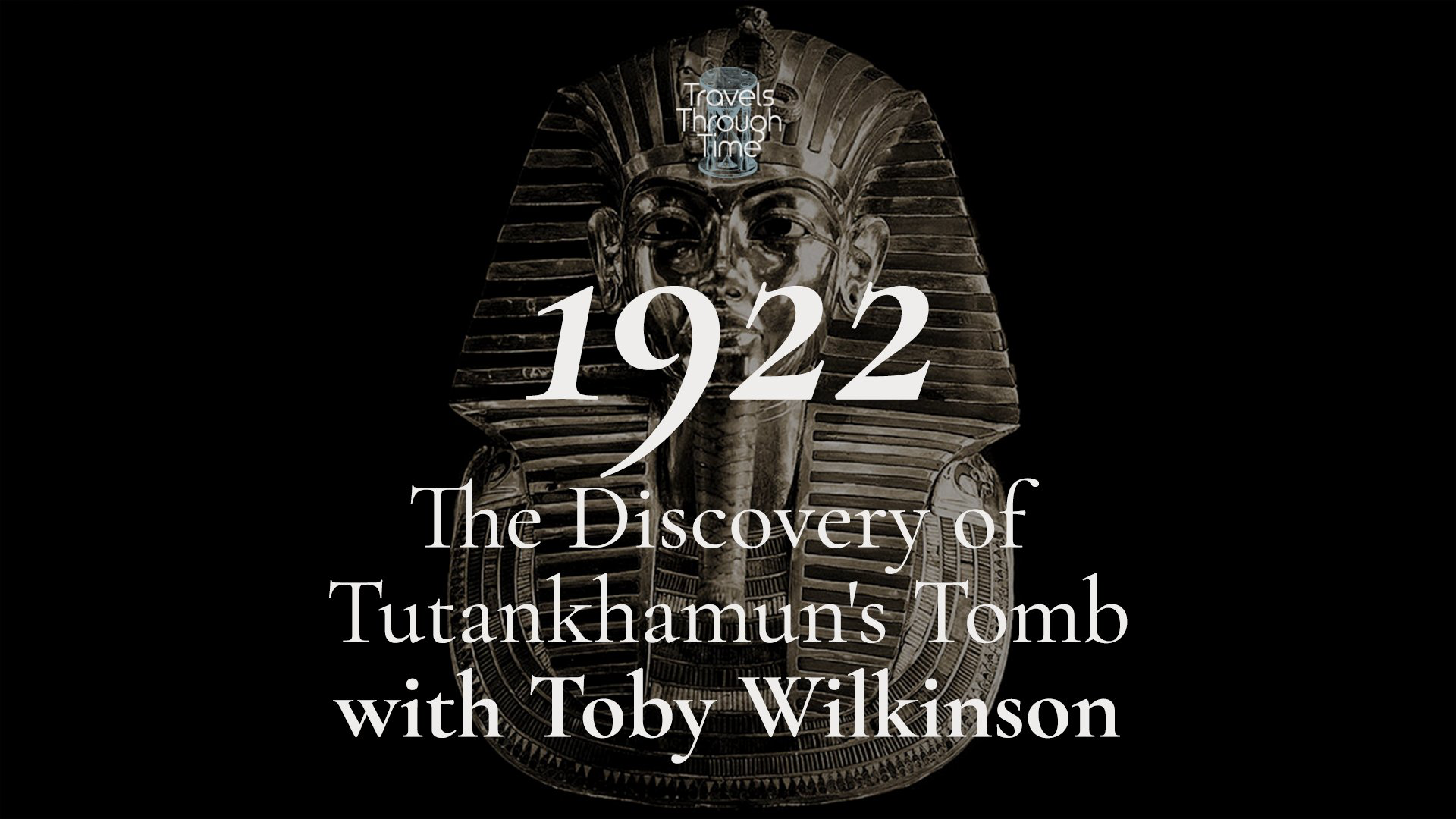
TTravels Through Time Podcast: The Discovery of Tutankhamun’s Tomb with Toby Wilkinson (1922)

Additional Credit
With thanks to Philippa McEwan and Kieran Sangha at Pan Macmillan and Peter Moore.


